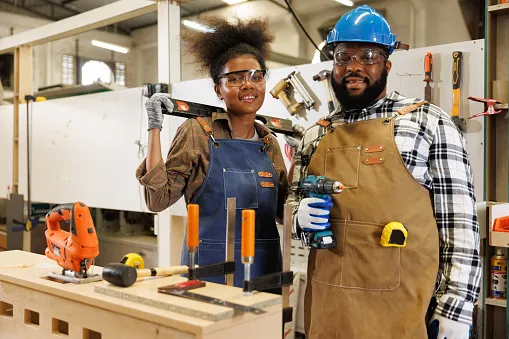
Woodworking is a timeless craft that has been passed down through generations. Many people have found joy in creating beautiful and functional pieces out of wood. One common question that woodworking enthusiasts often get asked is, “How did you guys learn woodworking?”
Which is why a planer built for evenly removing wood will be your best friend in properly setting up your sanders for success. It goes without saying that the difference between a high and low quality project is the finish. Well, the safe bet is 24 hours but most woodworkers will allow for at least overnight (12-16 hours in most cases). And while woodworkers know that glue joints are almost always stronger than the surrounding wood, some novices always seem to add in other joints. And most woodworkers, for this reason, will use a high count blade with an alternating tooth pattern to sear the wood edges and avoid tear-out.
Formal Education
If you already have a starter project in mind, check out the recommended tools for that project and start there. If you want to and have the means to buy tools from the get go, do it! If you want to dip your toes into DIY and woodworking before making an investment in tools, that’s fine too.
Start with coarse grit sandpaper and gradually progress to finer grits. Use a sanding block or random orbital sander for even and consistent sanding. Choose well-dried and stable wood, acclimate it to your workspace, and store it properly to prevent warping. Practice proper assembly techniques, including using clamps, screws, or nails to join pieces securely. Explore basic joinery methods like butt joints, miter joints, and pocket holes to connect wood pieces securely.
Whether you are a beginner or an experienced woodworker, following some basic safety tips can help prevent accidents and injuries in the woodshop. For those just starting to learn woodworking, it’s recommended to begin with softer woods such as pine, cedar, or poplar. These woods are more forgiving and easier to cut and shape compared to harder varieties like oak or maple.
Whether you are a complete beginner or simply looking to expand your knowledge, there is something for everyone in the art of woodworking. Understanding the basics of woodworking tools and equipment is a crucial first step for anyone looking to delve into this rewarding craft. One of the best ways to learn woodworking skills is to take a class.
The range of sizes of drill bits varies vastly across 47 different sizes of standard drill bits. Planing is used to smooth and remove excess material from wooden surfaces using a planer machine or hand tool. Jointing is the process of preparing the edges of wooden boards for gluing them to another board. While biscuit joiners have been around for decades it is only recently that the Festool DOMINO has become ‘the’ tool to own for loose tenon joinery. In this article learn the differences between a domino joiner vs biscuit joiner and what’s best for your projects.
Some individuals may have learned woodworking through formal education. Vocational schools, community colleges, and trade programs offer courses in woodworking where students can learn basic skills and techniques. These programs provide hands-on experience and guidance from experienced instructors, helping individuals develop a strong foundation in woodworking.
Apprenticeships
Another way that some people have learned woodworking is through apprenticeships. By working under a skilled carpenter or woodworker, individuals can learn the craft firsthand and gain valuable insights into the profession. Apprenticeships allow for practical experience and mentorship, which can be invaluable in honing one’s woodworking skills.
Self-Taught
Many woodworking enthusiasts are self-taught. With the wealth of information available online, through books, and in woodworking forums, individuals can teach themselves the basics of woodworking. By practicing and experimenting with different techniques, self-taught woodworkers can develop their skills and create unique pieces.
Passion and Dedication
Regardless of how individuals have learned woodworking, one common thread among woodworking enthusiasts is their passion and dedication to the craft. Whether they have received formal training, apprenticed under a master, or taught themselves, woodworking requires patience, creativity, and a love for working with wood.
So, if you’re interested in learning woodworking, consider exploring different avenues such as formal education, apprenticeships, or self-teaching. With determination and a willingness to learn, you too can master the art of woodworking and create beautiful pieces to cherish for years to come.



